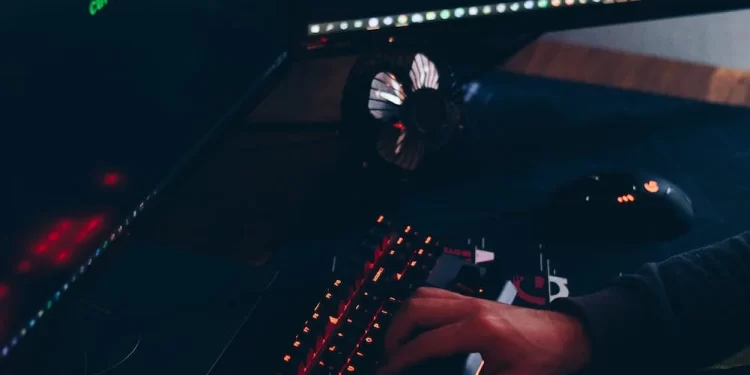“Hi, Na’im. I ran my work through 1text and Duplichecker plagiarism software and was astounded by the report I got. I didn’t copy anything from any website, but I wonder how I had 65% uniqueness when I expected a 100% unique level. Upon surfing the net, I came across deplagiarism. How can I deplagiarise the content; what should I do?
Plagiarism is a severe issue in academic, professional, and creative circles. It is defined as taking someone else’s work and presenting it as one’s own. Plagiarism occurs in numerous forms, and the consequences can be severe.
It is essential to understand the different types of plagiarism, the consequences of plagiarism, and how to avoid it. In this blog post, we will discuss the definition of plagiarism, the importance of avoiding plagiarism, deplagiarism techniques, examples of deplagiarism tools and software, and steps to take if you are accused of plagiarism.
Definition of Plagiarism
Plagiarism is taking someone else’s work, ideas, or words and presenting them as your own without proper attribution. It can be intentional or unintentional. Plagiarism can occur in many forms, including copying and pasting from a source, paraphrasing without giving credit, and using someone else’s ideas without citation.
Importance of Avoiding Plagiarism
to deplagiarise or avoid plagiarism is crucial because it is considered unethical and can have serious consequences. Plagiarism can damage your reputation, both personally and professionally. It can also result in legal action or academic consequences. Moreover, it undermines the integrity of the academic or professional community.
Explanation of Deplagiarism
Deplagiarism is the process of detecting and removing plagiarism from a text. It is used to check the originality of a text and ensure that it is not plagiarized. Deplagiarism is essential for maintaining academic integrity and ensuring that the work produced is original.
Types of Plagiarism
There are several types of plagiarism, including direct, self-plagiarism, mosaic, and accidental.
- Direct plagiarism is the most common type of plagiarism. It involves copying someone else’s work word-for-word without giving credit.
- Self-plagiarism is the act of reusing one’s work without proper citation. Most times, It can occur when a student submits the same paper for two different classes or when an author uses parts of a previous publication in a new publication.
- Mosaic plagiarism, or patchwork plagiarism, involves copying and pasting from multiple sources without proper attribution.
- Accidental plagiarism occurs when a writer inadvertently uses someone else’s work without realizing it. This can happen when a writer forgets to include a citation or misremembers the source of an idea.
Consequences of Plagiarism
The consequences of plagiarism can be severe, including academic, legal, and professional consequences.
- Academic consequences include failing a class or being expelled from school. Plagiarism can damage a student’s reputation and future educational or career opportunities.
- Legal consequences can include copyright infringement and litigation. This is especially relevant for writers who publish their work.
- Professional consequences can include loss of credibility and damage to reputation. Plagiarism can also result in job loss or the inability to obtain employment in the future.
Deplagiarism Techniques
Deplagiarism techniques can be divided into manual methods and software-based methods. Manual methods involve reading a text and looking for plagiarism to deplagiarise it. Software-based methods use computer programs to analyze a text and identify potential instances of plagiarism.
The choice of method depends on the context. Manual techniques may be more appropriate for shorter texts or a quick check. Software-based methods may be more suitable for longer texts or for a more thorough analysis.
Examples of Deplagiarism Tools and Software
There are many deplagiarism tools and software available to deplagiarise text. Some popular examples include Turnitin, PlagScan, and Grammarly.
- Turnitin is a software-based tool that checks a text for plagiarism by comparing it to a database of previously submitted papers and online sources. It generates a similarity report that identifies any matching text and provides a similarity percentage. Turnitin is widely used in academic institutions and is known for its accuracy and reliability.
- PlagScan is another software-based tool that checks a text for plagiarism. It compares the text to a database of online sources and generates a similarity report. PlagScan is known for its ease of use and quick results.
- Grammarly is a writing assistant that checks a text for grammatical errors, spelling mistakes, and plagiarism. It compares the text to a database of online sources and generates a plagiarism report. Grammarly is widely used by writers and students and is known for its user-friendly interface. After it highlights the text, you can then deplagiarise it.
Steps to Take if You Are Accused of Plagiarism
If you are accused of plagiarism, it is crucial to take the following steps:
- Acknowledge the accusation: Take it seriously and acknowledge it has been made.
- Gather evidence of your work: Collect all the relevant information that shows your work is original. This may include notes, drafts, and sources.
- Seek legal or academic counsel: Seek the advice of a lawyer or academic advisor who can guide you through the process.
Conclusion
Avoiding plagiarism is essential for maintaining academic integrity and ensuring original work. Deplagiarism techniques help detect and remove instances of plagiarism. To get this done, choose the proper method for the context and use deplagiarism tools when necessary to deplagiarise it. If you are accused of plagiarism, take the accusation seriously and seek legal or academic counsel. Ultimately, the ethical implications of plagiarism and deplagiarism remind us of the importance of honesty and integrity in academic and professional work











